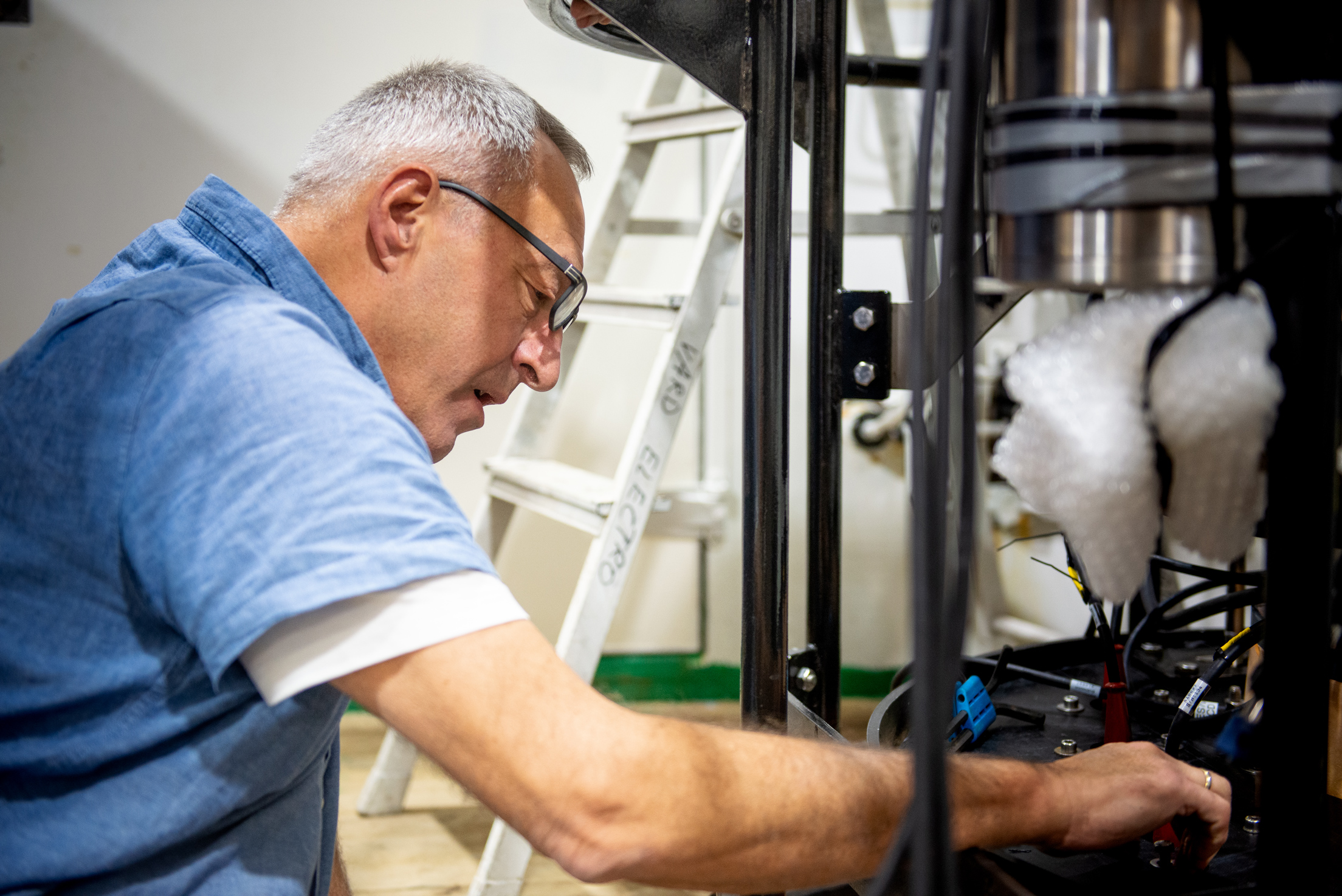Learning to reveal the secrets of the sea

Å læra ved å gjera om bord på «G.O. Sars» er noko heilt anna enn å sitja i eit vanleg klasserom, synest studentane. Frå venstre: Kjetil Thorvaldsen (Danmark/Noreg), Muriel Dunn (Canada), Elor Sepp (Estland), Chelsey McGowan-Yallop (Storbritannia).
Photo: Christine Fagerbakke / Institute of Marine ResearchPublished: 09.01.2020 Updated: 06.02.2020
“What I like best about the course is that it’s really hands on. You can actually watch the data being collected, instead of going to a lecture and being told how it’s supposed to work”, says Kjetil Thorvaldsen from Bergen.
He was one of 20 students from 12 different countries who attended the course on broadband acoustics organised by the International Council for Exploration of the Seas (ICES). Even bearing in mind that he is doing his PhD at the Danish institute DTU Aqua, Thorvaldsen was one of the people with the shortest journey to the course.
“If something doesn’t work, you can see what is wrong – and then try to correct it”, says Muriel Dunn, a PhD student at Memorial University in Newfoundland on the east coast of Canada.
“You can change the settings of the sonar and immediately see how it affects the results”, adds Elor Sepp from the Estonian Marine Institute.

Cutting edge echo sounders
It isn’t a coincidence that they are on G.O. Sars to learn about fisheries acoustics. The ship’s echo sounder, a Simrad EK80, is a completely different and more advanced piece of equipment than the ones you find on more traditional vessels.
“With the old echo sounders, we used to shout ‘hello’ down into the fjord at one frequency and then record the echo. Now we have five or six echo sounders that all shout ‘hello’ at different frequency bands. You might say that instead of using just one voice, we’re now using a whole choir”, explains researcher Egil Ona.
The name “broadband sonar” refers to the frequency band. Compared with a traditional sonar, it produces a hundred times more data, and this detailed information makes it easier to distinguish different species of fish, larvae and plankton – or to count individual Mueller’s pearlsides, each just four centimetres long, at a depth of one hundred metres. But it also requires advanced maths and the right methodology.
“It takes time to learn those things, and we haven’t even learnt how to make full use of the device’s capabilities ourselves yet. At the moment we’re investigating things like whether the broadband echo sounder can tell us if herring are spawn-ready”, says Ona.

High-level collaboration
Ona, who is one of the course instructors, has himself helped to develop the new echo sounder, which is the result of a partnership between Kongsberg Maritime (which owns the distinguished brand Simrad) and the IMR – one dating right back to a post-war push to develop industry and marine research.
Work on the EK80 started in 2009, and eight years later it reached the market.
“I think it is the seventh generation of Simrad echo sounder that I have used during my time here. We are not yet making full use of the technology on board; it takes time to learn how to exploit its capabilities”, says Ona.
Working alongside several of his colleagues at the IMR, he is happy to pass on the methodology to a new generation of marine scientists. This was the fourth time this course was held on G.O. Sars, and Ona believes that Osterfjorden is an ideal location.
“There are lots of strange organisms in the fjord here, including decent quantities of mesopelagic species like the Mueller’s pearlside and glacier lantern fish, but also krill, blue whiting and jellyfish. So there are plenty of things to catch in your trawl. It also means we’re close enough to base to go back and forth to perform tests, with the added benefit that the students don’t get sea-sick during their lectures on maths and signal processing”, he says with a smile.

Framtida for havforskinga
Studentane om bord er samde om at teknologien som blir brukt på «G. O. Sars» er nødvendig å læra for alle som satsar på ei framtid innan havforsking med hjelp av ekkolodd. Dei reiser heim kvar til sine land med nytt nettverk og ny kunnskap som kan bidra til betre fiskeriforvalting i framtida.
– Eg jobbar sjølv på ein båt med eit eldre ekkoloddsystem, men ting utviklar seg heile tida, og før eller sidan går vi nok over på breibandteknologi. Difor er det nyttig å læra om det først som sist, seier estiske Elor Sepp.
– Kurset er også veldig god måte å koma inn i eit miljø som jobbar med breibandakustikk på, slik at me enklare kan samarbeida seinare, seier Muriel Dunn, som allereie har planlagt samarbeid med den britiske medstudenten Chelsey McGowan-Yallop.

